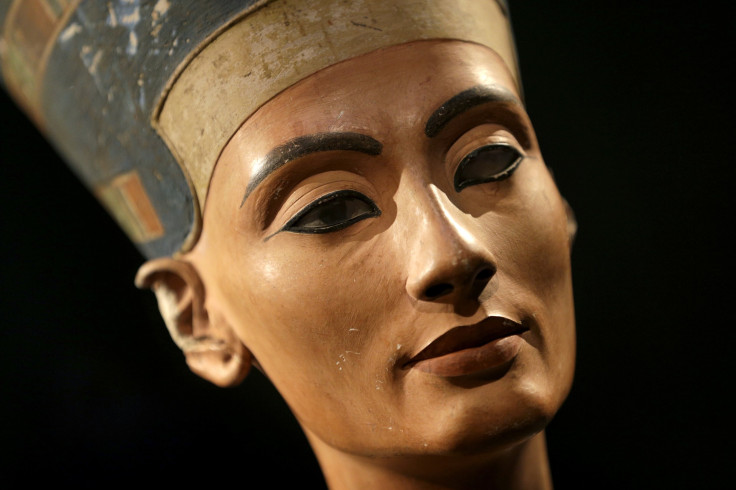Nefertiti Tomb Discovered? Egyptian Queen's Secret Chamber Buried Near King Tut's, Archaeologist Says

The whereabouts of Egyptian Queen Nefertiti's long-lost tomb have remained unknown for centuries, but it's possible her remains are buried behind secret doors in the tomb of her 3,300-year-old son, Tutankhamun, says University of Arizona archeologist Nicholas Reeves, who was given the go-ahead Monday to test his theory about King Tut's final resting place in Egypt.
Reeves, who is an Egyptologist, has received preliminary approval from the Egyptian Antiquities Ministry to use a noninvasive radar gun to examine the tomb when he makes the trip to Luxor, Egypt.
King Tut died when he was 18 years old, and Reeves suspects the Egyptians may have raced to bury him in what was originally Nefertiti's tomb because his was unfinished at the time of his death. Nefertiti is believed to have died 10 years earlier.
Tut, who was known as the "boy king," ruled from the age of 10 until his death at 18 in 1324 B.C. Nefertiti was the Great Royal Wife of Akhenaten, who ruled during the 14th century B.C.
British archeologist Howard Carter discovered the boy king's tomb in 1922, reviving the King Tut mythology. Inside the tomb were more than 2,000 artifacts.
In his research, Reeves claims that the tomb's northern walls have "distinct linear traces" that suggest a "still unexplored storage chamber" -- a conclusion he came to based on detailed scans commissioned by Spanish art and preservation specialists, Factum Arte.
Reeves said he also believes there are design markings that indicate the chamber was designated for a queen instead of a king. Some of them, he says, include features associated with Nefertiti, such as "“a somewhat scooped brow and nose and a straight jawline with gently rounded chin." Reeves also claims that Tut's tomb is much smaller than what is traditional for a pharaoh.
"If I'm wrong, I'm wrong, but if I'm right, the prospects are frankly staggering,” Reeves told the BBC in August when he first presented his theory.
The Egyptian Antiquities Ministry has scheduled a news conference for Oct. 1 to discuss plans to search the tomb.
© Copyright IBTimes 2024. All rights reserved.






















